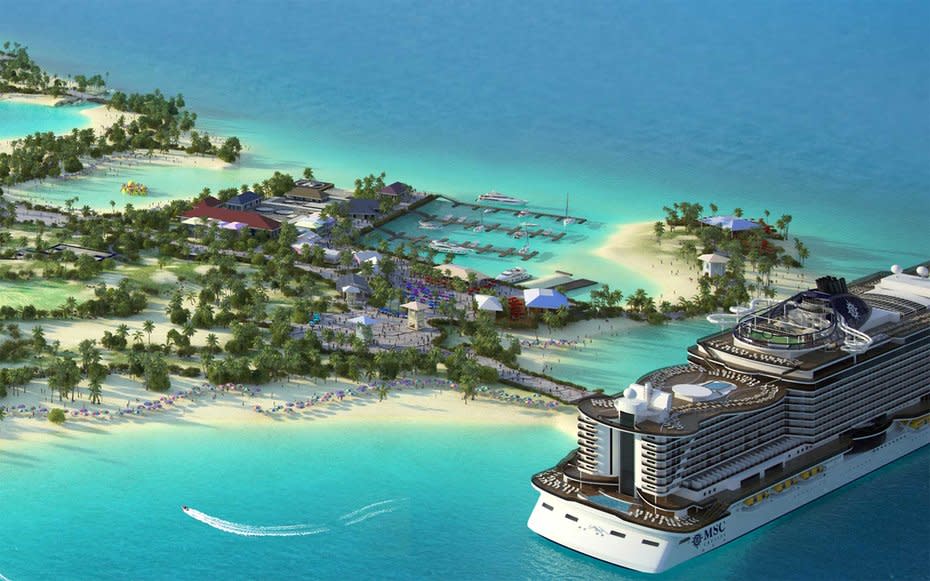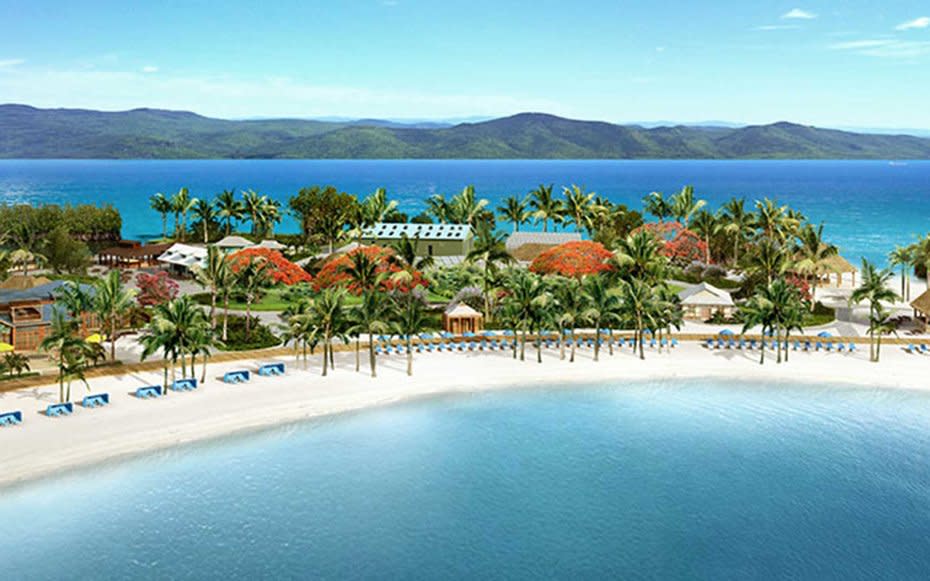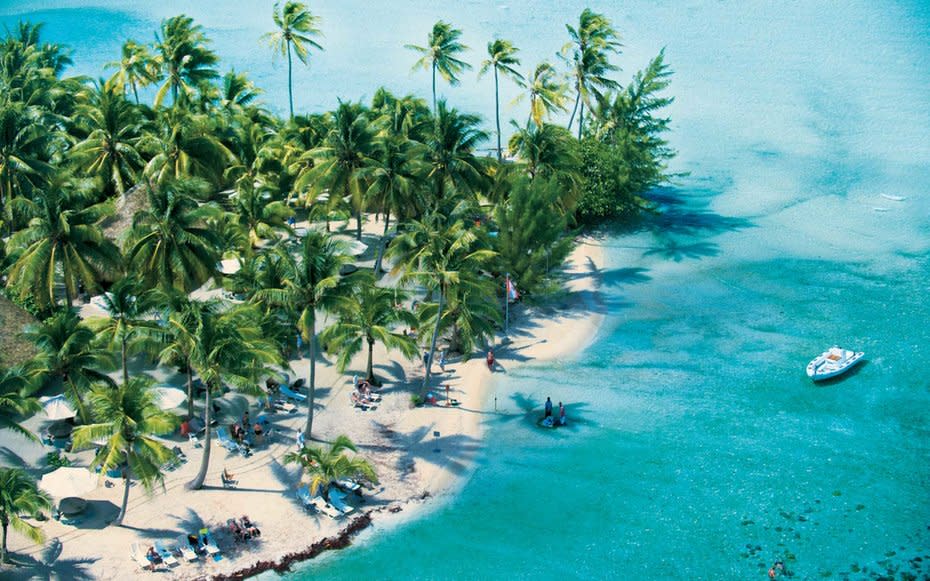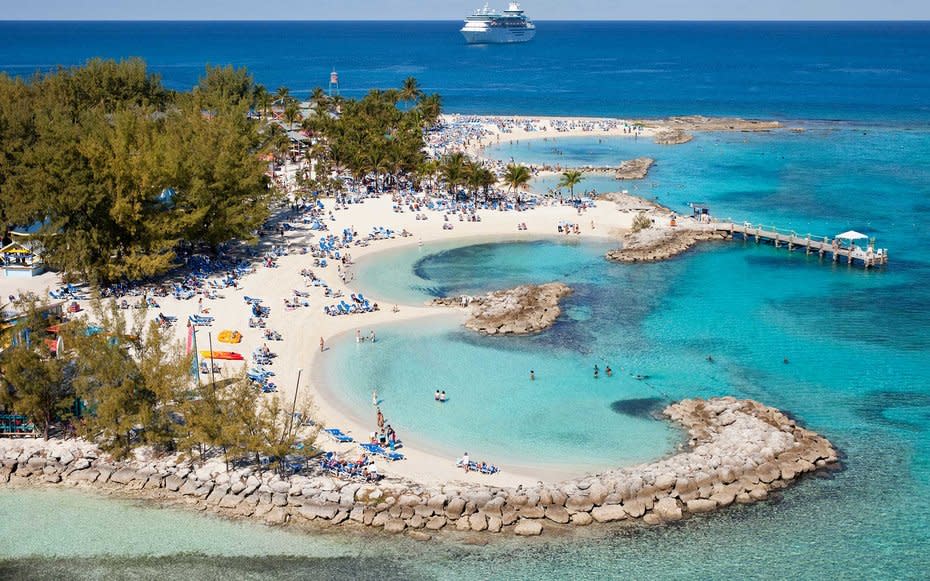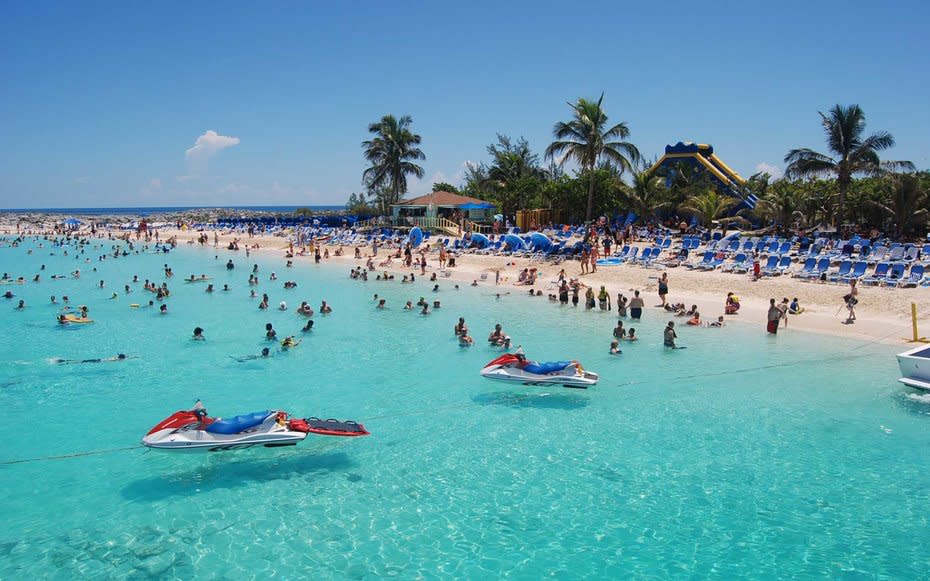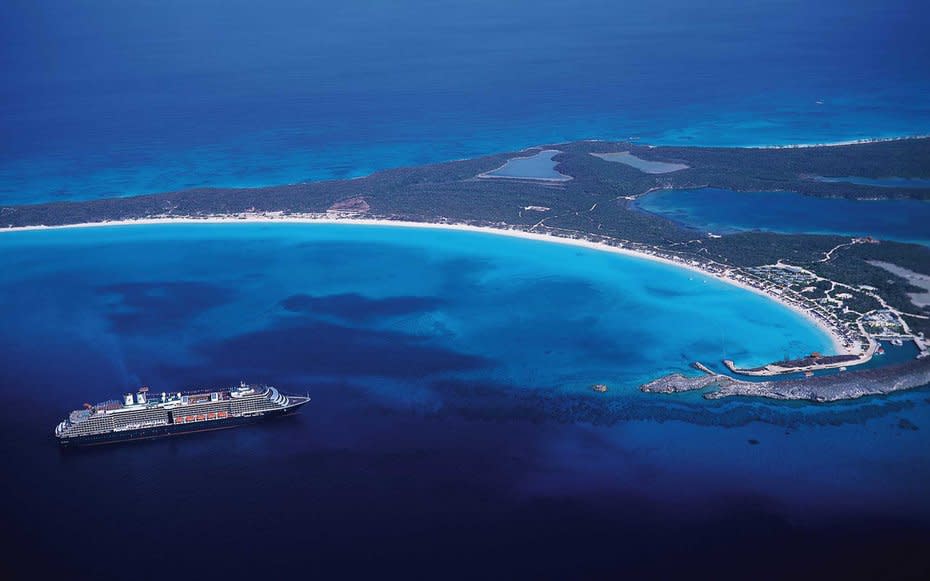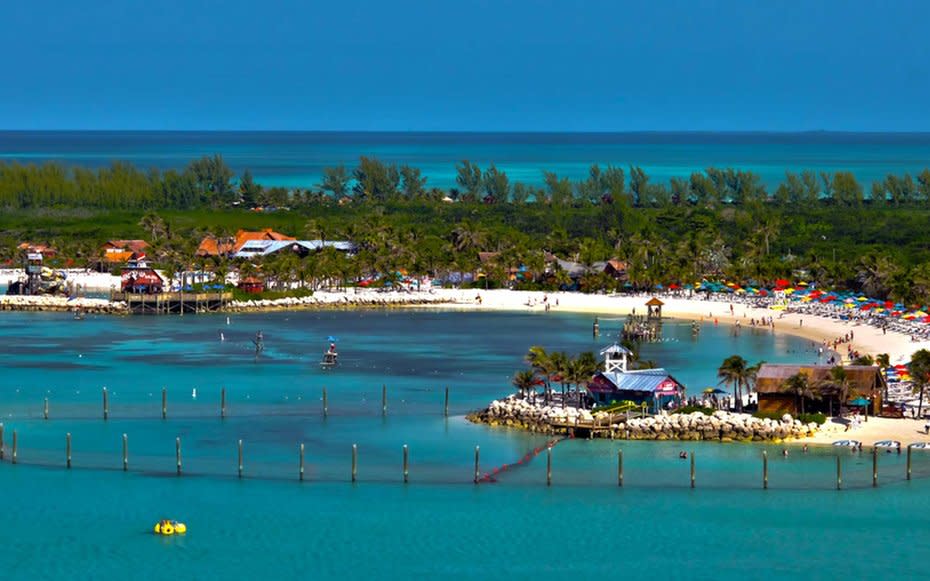Six Cruise Lines That Have Their Own Private Islands
With chic staterooms, high-end amenities, and over-the-top service, the only thing many cruise ships are missing is a long sandy beach. To get their fix, many passengers buy day passes to island resorts, where they have to battle it out with registered hotel guests for beach cabanas, umbrellas, and towel space. To remedy that, many cruise lines have purchased or leased private islands. Norwegian started the trend in 1977, when it bought Great Stirrup Cay from Belcher Oil Company. (And it will become the first cruise line with an island in Belize when Harvest Caye debuts off the coast of Placencia this fall.) Other companies with their own isles include Royal Caribbean, Disney Cruise Line, and Holland America, which all have outposts in the Bahamas, and Paul Gauguin, which claims a motu in French Polynesia. MSC is set to join the club in December 2017, when it debuts its own Bahamian isle, Ocean Cay. Here’s what to expect from a private-island port of call: Ships generally dock in the morning and take off late in the afternoon. For lunch, a beach barbecue is practically a given, and there are generally enough bars to keep thousands of passengers’ cups full of rum punch and daiquiris. Water activities are also abundant, as most islands offer snorkeling, kayaking, jet skiing, parasailing, and paddle boarding. As for shopping, while most activities and food can usually be paid for with on-ship cards, straw markets run by local islanders are often cash only—check before you leave the ship. But for many passengers, a day on a private isle is all about the beach. Areas near the tender or pier will often be the most crowded, so ask about more secluded options before you leave the ship. And if the island doesn’t have its own pier, you’ll want to get a ticket on one of the first tenders. That way you can stake a claim on a primo spot on the sand.

 Yahoo Finance
Yahoo Finance 